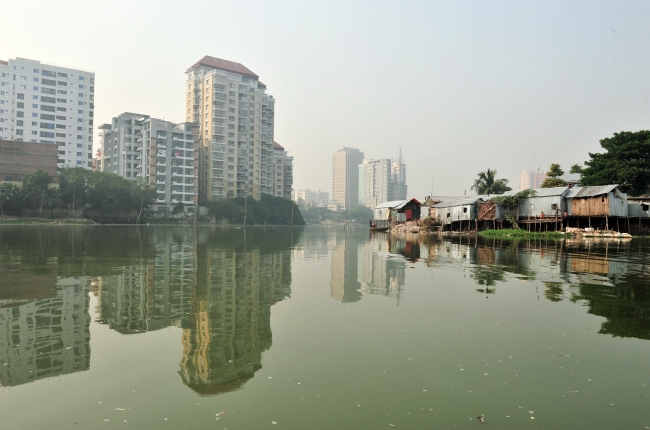How do we ensure towns and cities are viable places to live?

It was around 2009 that the world changed fundamentally: for the first time in human history, more than half of all people lived in cities.
By 2050, the number will have risen to 70%, with some 6 billion people calling the bright lights home. It’s been called the Urban Millennium.
While urbanization can be a force for good, bringing people closer to services such as education and healthcare, others see it as a cause for concern.
Competing demands for land, water and energy are already affecting the environment in and around cities. Managing these effectively could make or break cities as viable places to live.
A new book explores these issues in detail. Co-edited by Priyanie Amerasinghe of the International Water Management Institute (IWMI), with several chapters contributed by IWMI scientists, The security of water, food, energy and liveability of cities takes stock of the trends, issues and challenges now, and those likely to pinch in the future.
“Since the domestication of food crops and the dawn of agriculture, there has probably never been a more fundamental shift in the way we live, the way we organize our lives and the way societies function,” says Amerasinghe.
[pullquote type=”pullquote3″ content=”If we don’t establish effective policies and institutions to properly manage rapid urban growth, we might look back at the Urban Millennium as a disaster for humanity and the environment.” quote_icon=”yes” align=”center” textcolor=”#349433″]If we don’t establish effective policies and institutions to properly manage rapid urban growth, we might look back at the Urban Millennium as a disaster for humanity and the environment.[/pullquote]
The book draws on research from Ghana, India, Bangladesh, Australia and others. As well as the impacts of urbanization around the world, it pays particular attention to peri-urban areas – those on the fringes of cities – that face increasing pressure from rapid development of agriculture, construction and extraction of natural resources. Land in these areas is already becoming degraded, and water supplies above and below the ground are being overdrawn or polluted.
It also explores what sustainable cities might look like, with chapters on solar energy, use of storm water, wastewater reuse, decentralized wastewater management, sanitation, and recycling.
[hr-border top=”no”/]
Findings reported in the volume support the CGIAR Research Program on Water, Land and Ecosystems (WLE), which has under its Resource Recovery and Reuse sub-program a particular focus on efficient water and land management in peri-urban areas.
[hr-border top=”no”/]
About the book
Maheshwari, B.; Purohit, R.; Malano, H.; Singh, V. P.; Amerasinghe, P. (Eds.) 2014. The security of water, food, energy and liveability of cities: challenges and opportunities for peri-urban futures. Dordrecht, Netherlands: Springer. 489p. (Water Science and Technology Library Volume 71).
Priyanie Amerasinghe is Head, IWMI-Hyderabad and Sr. Researcher – Bio-Medical Sciences, at the International Water Management Institute, Hyderabad, India.

